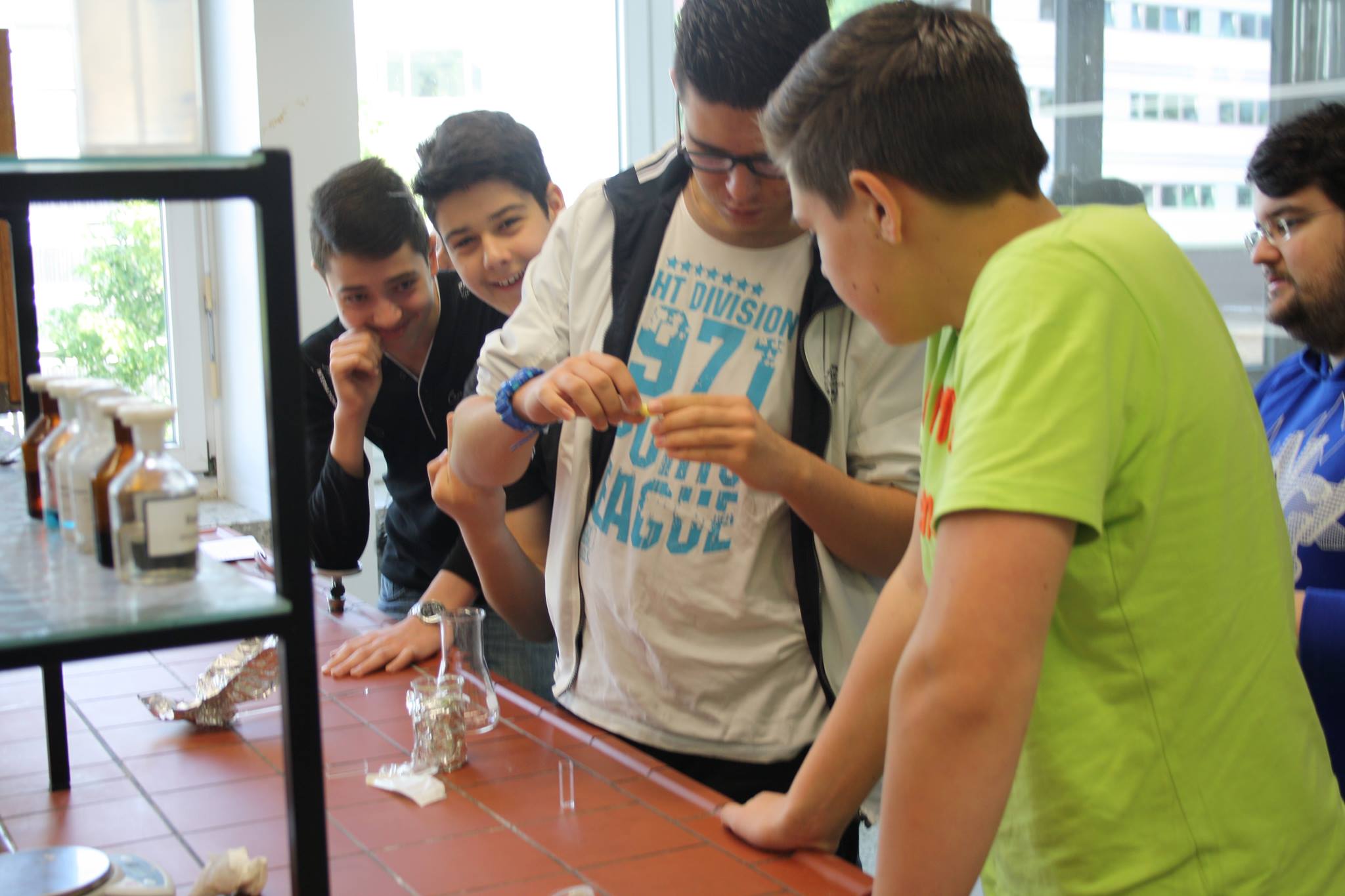Team:Aachen/Collaborations/Kaiser-Karls-Gymnasium
From 2014.igem.org
(Difference between revisions)
(→Teaching Module "Synthetic Biology" for Highschools) |
|||
| Line 9: | Line 9: | ||
= Teaching Module "Synthetic Biology" for Highschools = | = Teaching Module "Synthetic Biology" for Highschools = | ||
| + | </center> | ||
{{Team:Aachen/Figure|Aachen_10368603_641110722633054_705291843_o.jpg|left|width=500px|title=Science in Action|subtitle=Students at Kaiser-Karls-Gymnasium preparing vanilla pudding solution for fluorescence measurement.}} | {{Team:Aachen/Figure|Aachen_10368603_641110722633054_705291843_o.jpg|left|width=500px|title=Science in Action|subtitle=Students at Kaiser-Karls-Gymnasium preparing vanilla pudding solution for fluorescence measurement.}} | ||
| + | </center> | ||
| + | |||
In the course of our cooperation with the grade 9 biology-chemistry class at Kaiser-Karl-Gymnasium, a secondary school in Aachen, we developed a teaching module about “Synthetic Biology”. The scope of the module is 8 school classes 45 min. each. Topics include | In the course of our cooperation with the grade 9 biology-chemistry class at Kaiser-Karl-Gymnasium, a secondary school in Aachen, we developed a teaching module about “Synthetic Biology”. The scope of the module is 8 school classes 45 min. each. Topics include | ||
*sources of and exposure to microorganisms in our environment | *sources of and exposure to microorganisms in our environment | ||
| Line 22: | Line 25: | ||
The first time, we carried out this teaching module in cooperation with Kaiser-Karls-Gymnasium. For each of the lessons we have recorded our experience in a blog entry. You will be directed to the respective entry by clicking on the lesson title. | The first time, we carried out this teaching module in cooperation with Kaiser-Karls-Gymnasium. For each of the lessons we have recorded our experience in a blog entry. You will be directed to the respective entry by clicking on the lesson title. | ||
| + | </center> | ||
* [https://2014.igem.org/Team:Aachen/Blog/14-04-28-02 Lesson 1] | * [https://2014.igem.org/Team:Aachen/Blog/14-04-28-02 Lesson 1] | ||
* [https://2014.igem.org/Team:Aachen/Blog/14-05-22-01 Lesson 2] | * [https://2014.igem.org/Team:Aachen/Blog/14-05-22-01 Lesson 2] | ||
| Line 29: | Line 33: | ||
* [https://2014.igem.org/Team:Aachen/Blog/14-06-12-01 Lesson 8] | * [https://2014.igem.org/Team:Aachen/Blog/14-06-12-01 Lesson 8] | ||
| - | |||
<html> | <html> | ||
<script type="text/javascript" language="javascript"> | <script type="text/javascript" language="javascript"> | ||
Revision as of 08:31, 9 October 2014
 "
"















